History of St Mary Catholic Church
The first settlers came to our area in the 1840s and 1850s. The majority came from Ireland, a country where from the late 1600s to the early 1820s Catholics had been subjected to harsh laws. All Catholic churches were closed and priests had a price on their head. Catholics could not own land nor educate their children. In 1650, ninety-five percent of the land was owned by Irish Catholics. 175 years later, Catholics owned only two percent. In the mid 1840s, a blight attacked the potato crop, Irish tenants’ main source of sustenance. Thousands of people perished or emigrated to America. These early settlers came with no worldly possessions and many worked for the railroads or on the Erie Canal. They saved their money and bought land.
These settlers might see a missionary priest once a year, if then. In the early 1860s Father John Daley came from Sterling on horseback three times a year. Catholics met either in the Hutton Schoolhouse, nine miles south of Sterling, or in a settler’s home. At this time, Chicago’s Archdiocese extended from the Indiana border west to the Mississippi River.
In the early 1870s a priest from Sheffield, Father Hugh O’Gary McShane, tended to the Catholic settlers. In 1875, our area was extended to Ohio, Illinois. Father P. J. Gormley traveled from there to supervise the building of Tampico’s first Catholic church. The frame was 40 x 90 x 30 feet around with a 112 foot high spire.

The limits of the parish were the northwestern part of Bureau County, which at present belongs to the Peoria diocese, and the townships of Tampico, Hume, Prophetstown, Hahnaman, and Montmorency. There were 963 members in the parish. In 1879, Father R.V. McGuire was appointed as the first resident pastor. In 1881, four acres were purchased near the church for the cemetery.
Following Father McGuire were Fathers J.A. Fanning, J. Sullivan, A. Goulet, F.J. Kearney and P.J. Weber. Father Peter Weber built the first rectory in 1895. It was a two story frame house.

In 1902, Father Weber began the construction of the present Catholic Church. The dimensions of the church are 150×50 with a spire 125 feet high. A winter chapel is also attached to the rear of the building
The church is of pressed brick with stone trimmings, Gothic in style. The cornerstone is from a quarry in Nenagh, county Tipperary, Ireland. Given by the James Graham family, it was the first cornerstone in the state to be imported from Ireland.
On Thursday, September 8, 1904, The Most Rev. Peter J. Muldoon, who became the first Bishop of the Rockford Diocese which was established in 1908, dedicated the new church, built at a cost of $30,000.00. The entire debt was paid off by 1920.
The interior of St. Mary’s Church has changed little over the years. The side marble altars imported from Italy were given by Fr. Dufour (St. Joseph’s altar) and Mrs. Peter McGuire (Blessed Virgin’s altar). The rear altar was given for Thomas and Eleanor Burden by their children. Over the rear altar is a baldachino, also from Italy. At the top of the baldachino is a statue of a pelican pecking her breast to feed her young of her blood, an ancient symbol signifying Christ’s sacrificial role.
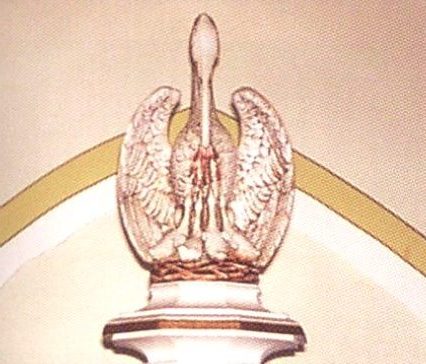
The Stations of the Cross are three dimensional and hand painted. The stained glass windows are unusually beautiful
In 1906, Father Leon DuFour became pastor and served for nearly 24 years. A French artist painted murals on the ceiling during his tenure.
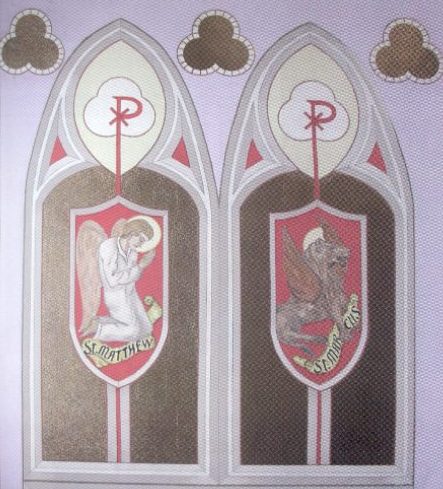
Father was forced to retire in 1928 due to failing eyesight. He was succeeded by Father Lynch who replaced the rectory with the present one for $12,000.00 and retired the debt by 1929.

In 1930, Father Thomas Maguire became pastor for the next 16 years. It was he who went through the Great Depression and World War II with this community. In 1946, Father died of pneumonia and is buried in our cemetery.
Father Ambrose Weitekamp, who had been an assistant under Fr. Dufour, returned as pastor in 1946 and served for twenty years. The church was further decorated. Using gold nail head fabric to form gothic arches, murals were painted over the side altars. On the wall behind the rear altar, are murals of the four evangelists.
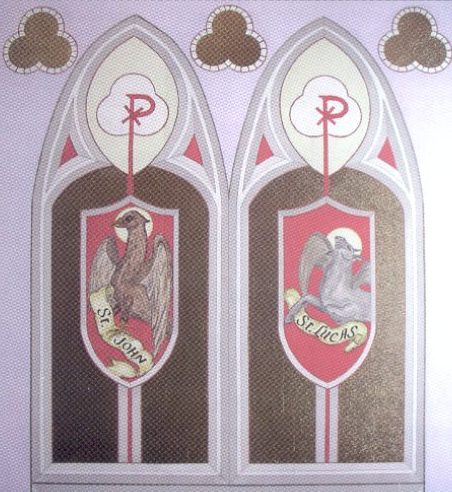
In 1952, Father Weiekamp tried to fulfill the wishes of Father Maguire’s dream of a parish hall. In May of 1954 the present hall was completed. The building is 50×73 feet on the southwest corner of the block north of the church. Father Weitekamp died in 1966 and is buried in our cemetery.

Father Robert Donovan served as pastor from 1966 until 1970. Father Eugene Parker then became pastor for the next 13 years. Father implemented the reforms of Vatican II. In 1971, he began the first Parish Council and a new religious instruction program involving many people of the parish as volunteer teachers.
Following Father Parker were Fathers Robert Balog (Sept. 1983 to Dec. 1983), Jim Tranel (Jan. 1987 to July 1990), and Leo Ambre (Dec. 1983 to Jan. 1987). During Father Ambre’s tenure, a team ministry was established. As pastoral associates, two School Sisters of Notre Dame Sr. Anna Marie Zeitner and Sr. Celeste Waugh who was succeeded by Sr. Anita Heffron lived in the rectory and ministered to the daily needs of the people from Aug. 1983 to Aug. 1986. Father Ambre came from Rockford Saturday night and Sunday to say Mass, give the sacraments and take care of the administration of the parish.
Following Father Ambre were Fathers Paul Lipinski (July 1990 to July 1991), Vincent Shindelar (July 1991 to June 1997), F. James Larson (June 1997 to August 1999), Thomas Bales (Sept. 1999 to June 2000), Anthony Pantyra (June 2000 to December 2002), Father Thomas Brantman (July 2002 to March 2004), and the present administrator from St. Mary’s of Sterling, Father Donald Ahles and his assistant Father Jesus Dominguez. With the ordination of William Lemmer in May 1998, the parish received its first permanent deacon.
The majority of the descendents of those who built this church one hundred years ago, have moved way to larger towns and cities. But a part of who they are, can be found in this beautiful church. The hopes and dreams of a past generation rest on our shoulders now. It is our faith experience that fills this church today. And so we come from near and faraway to celebrate our faith in God, our gratitude for those who came first, and our pride in St. Mary’s of Tampico.

Church Photographer: Jim Seyller
Centennial Chair: Sharon Welch Callaghan
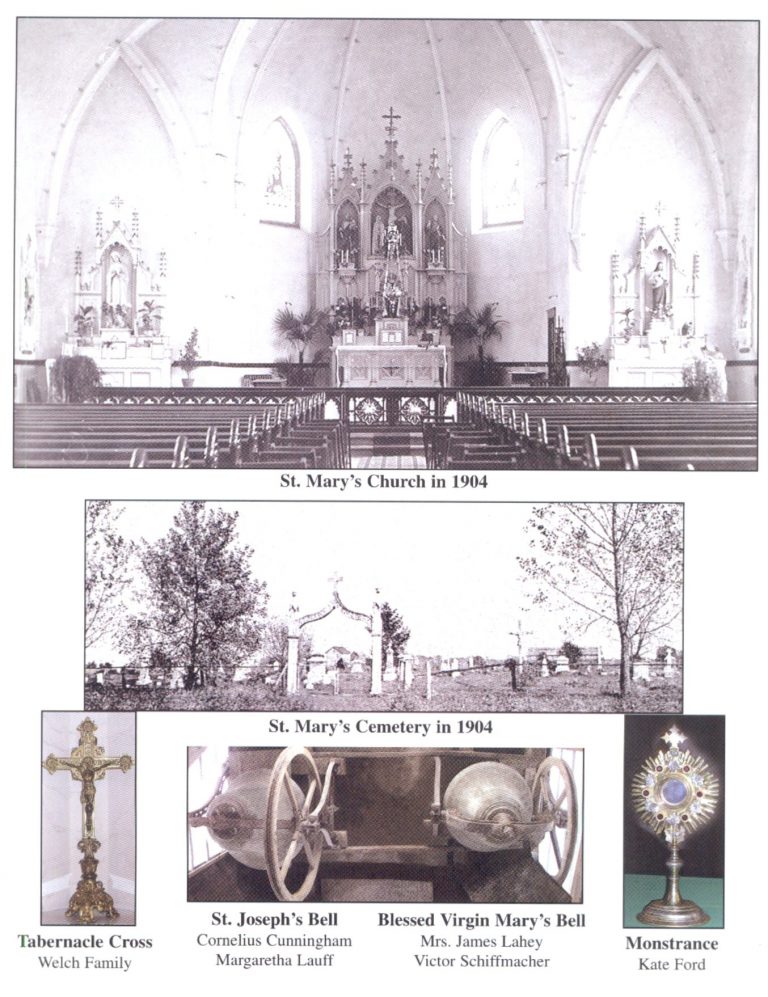
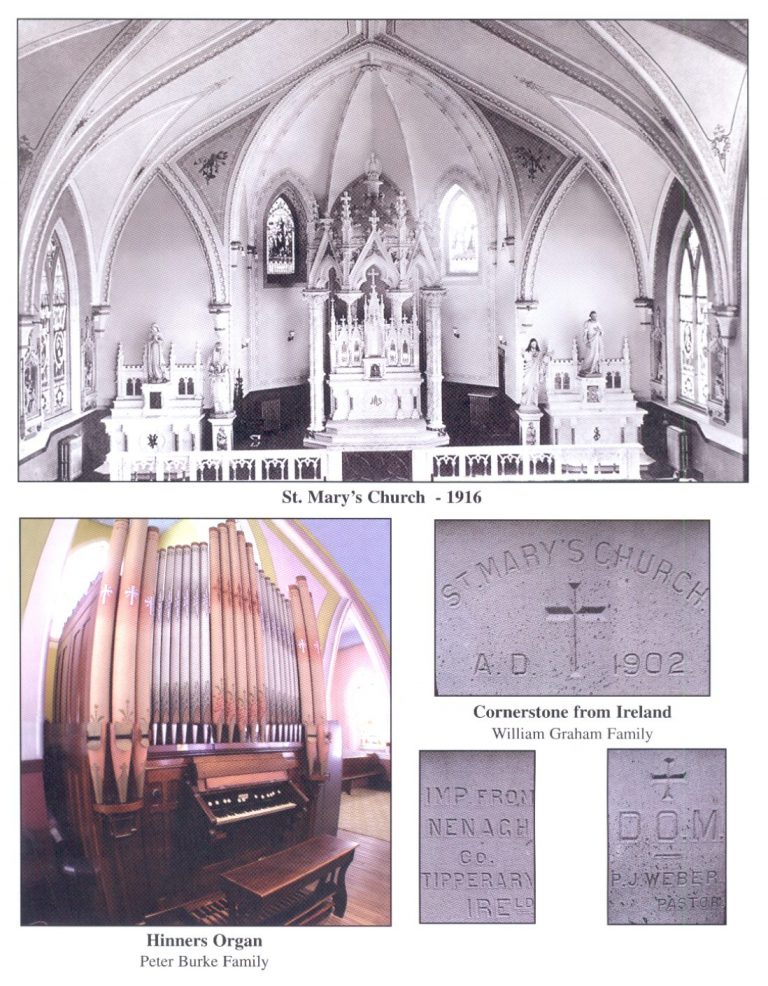
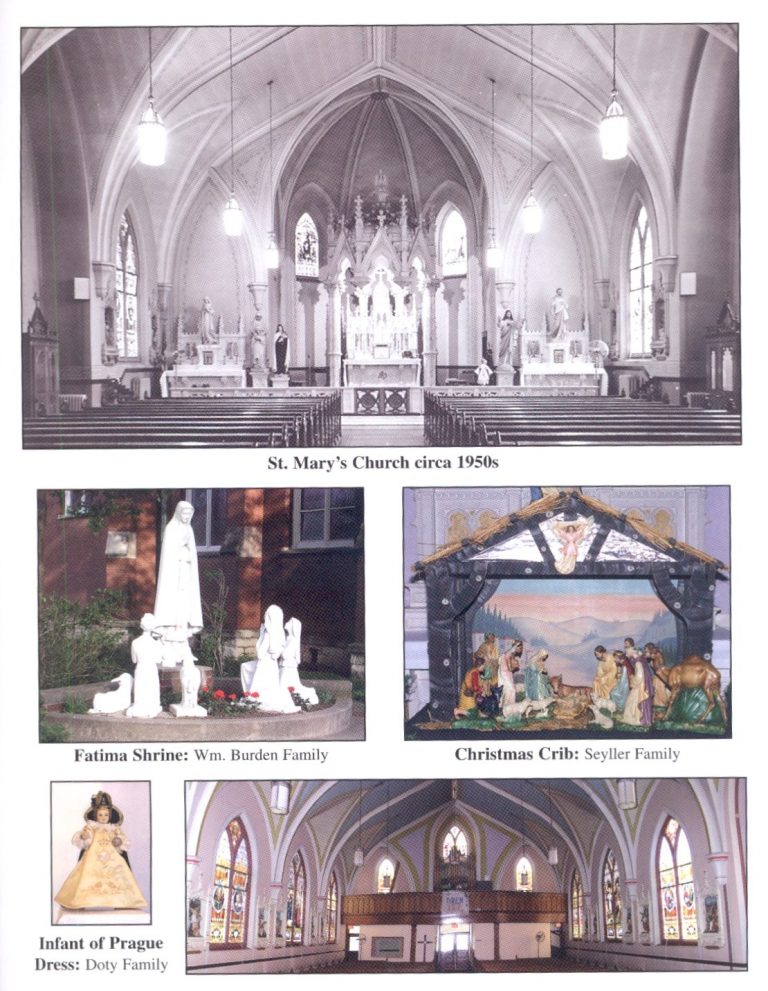
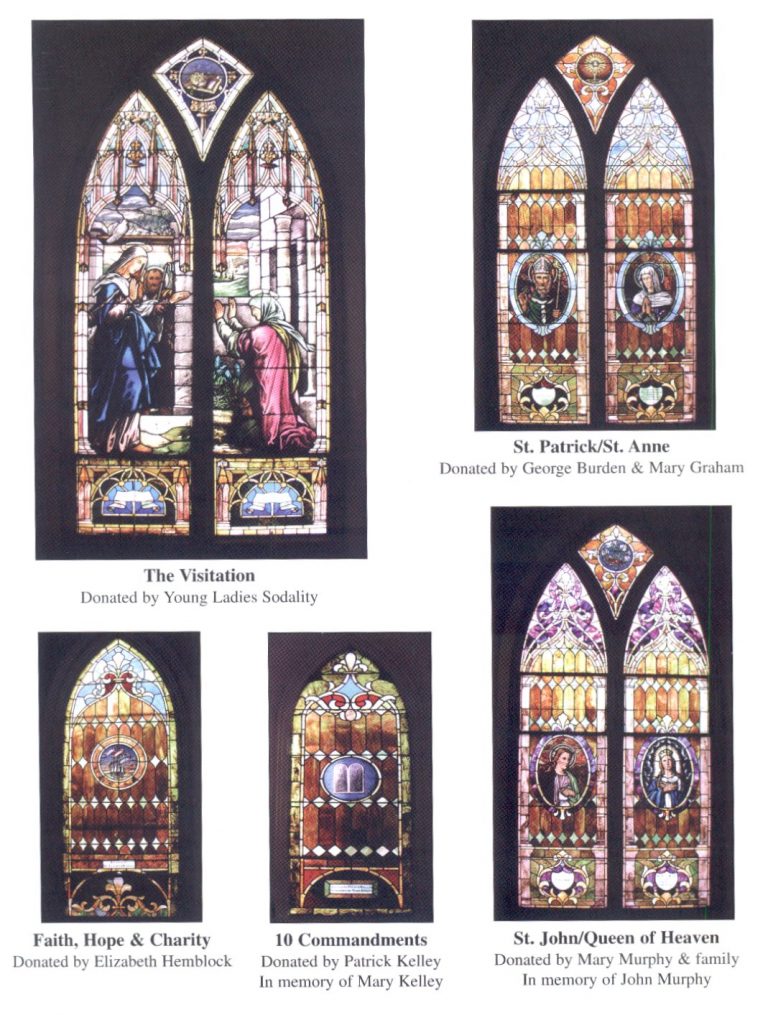
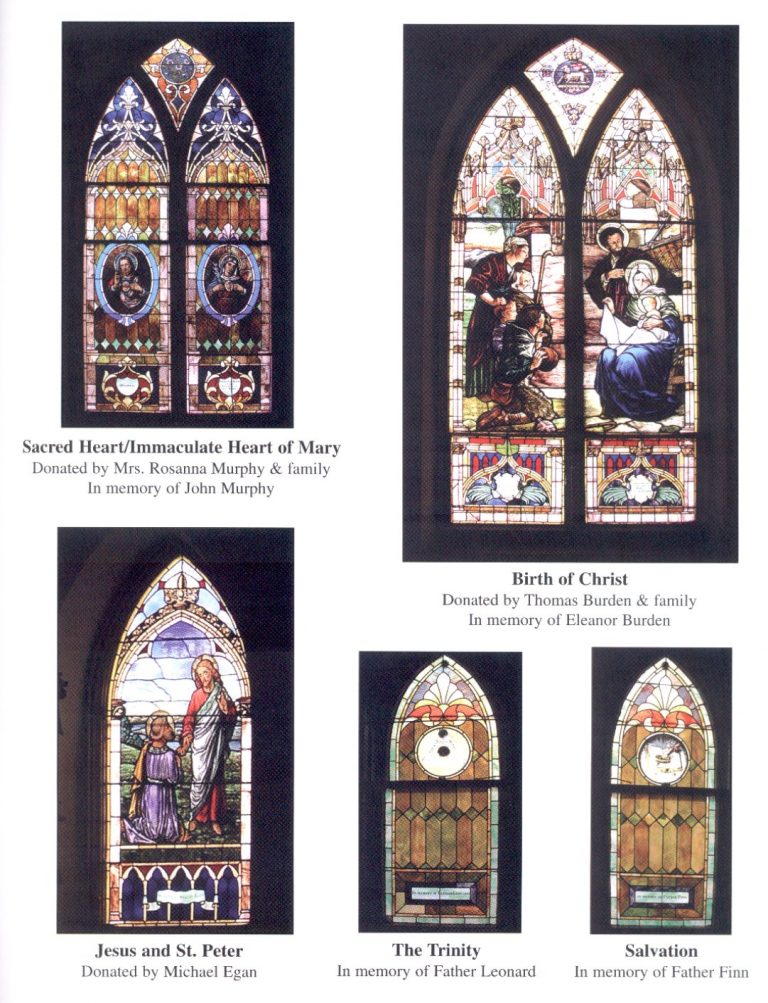
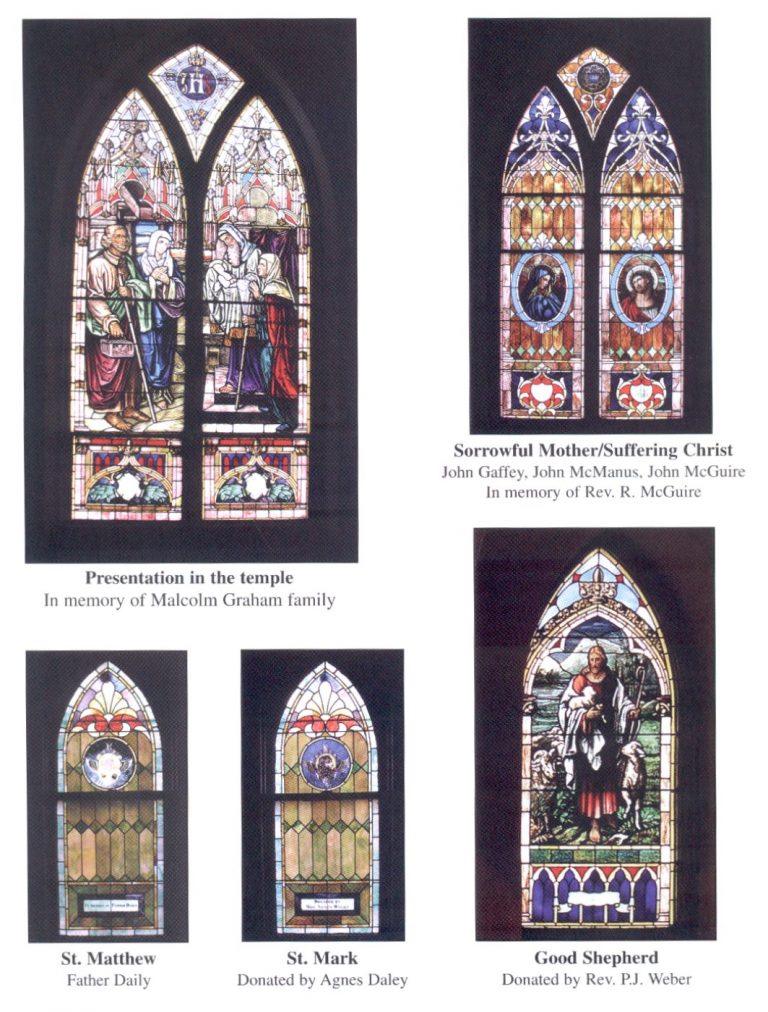
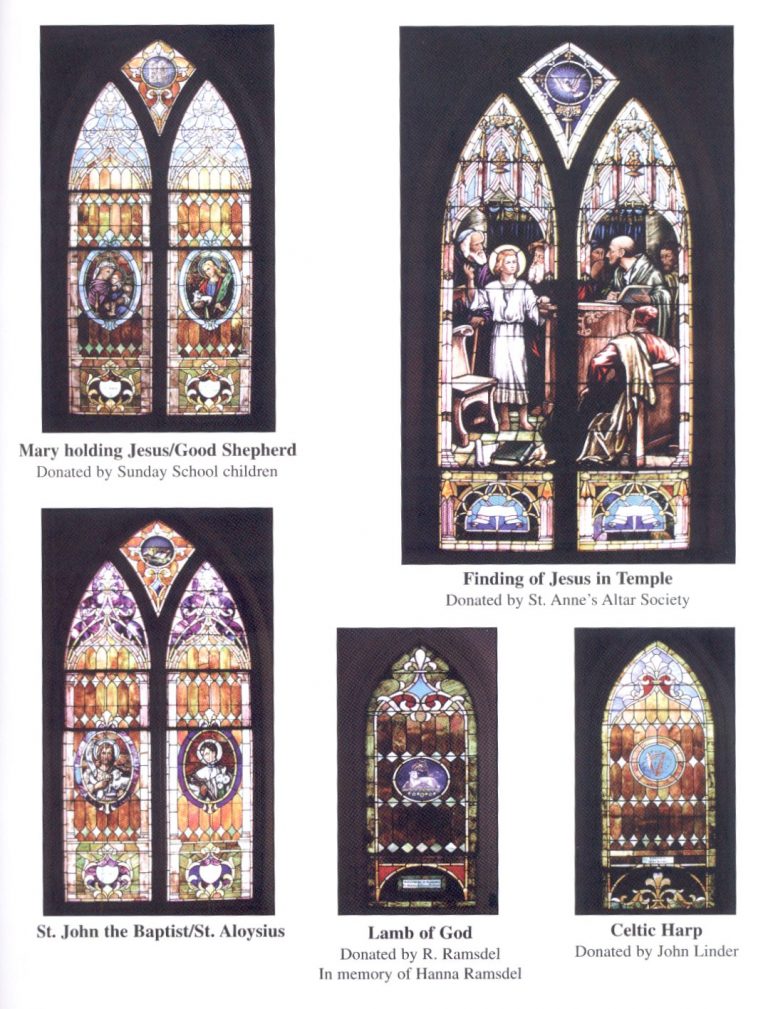
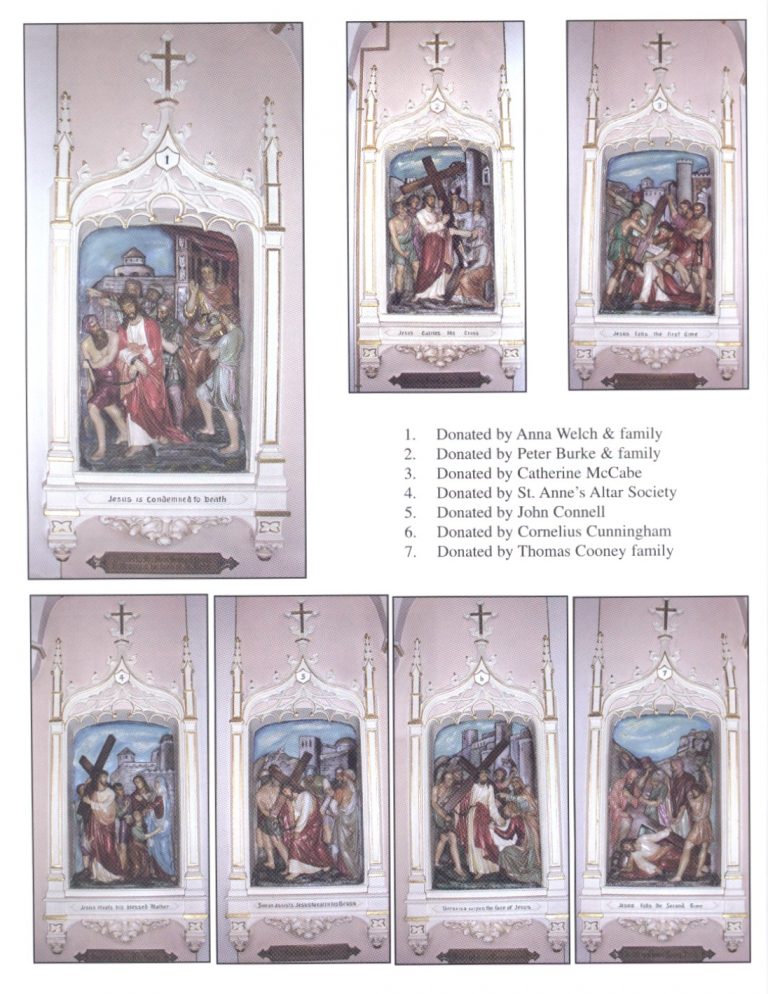
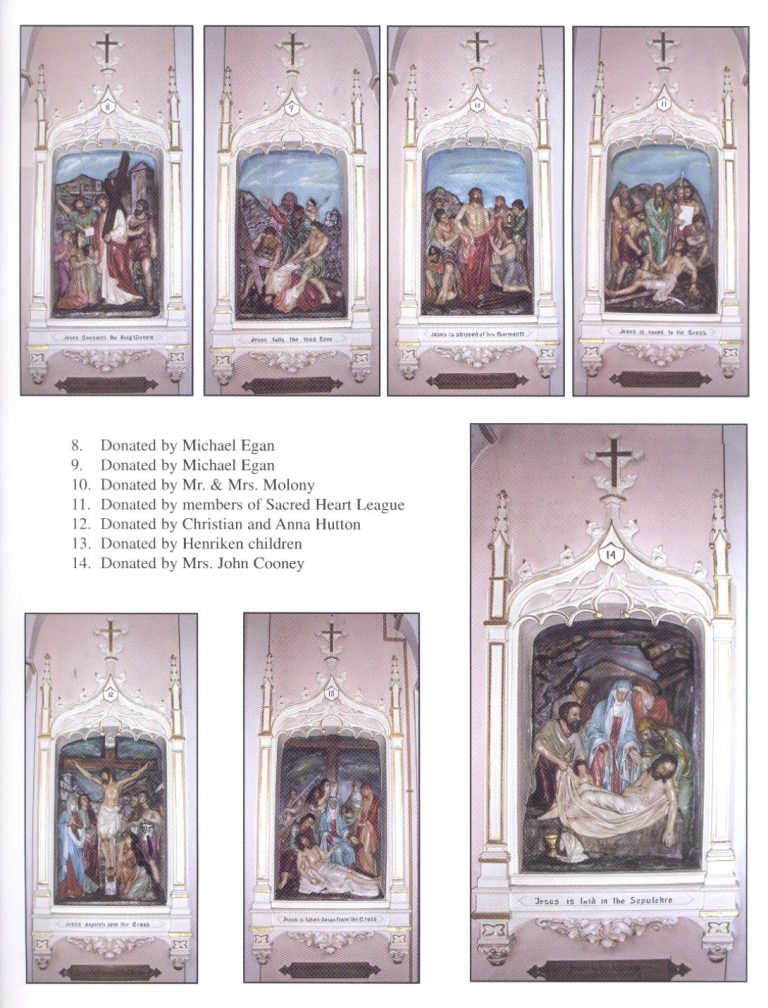
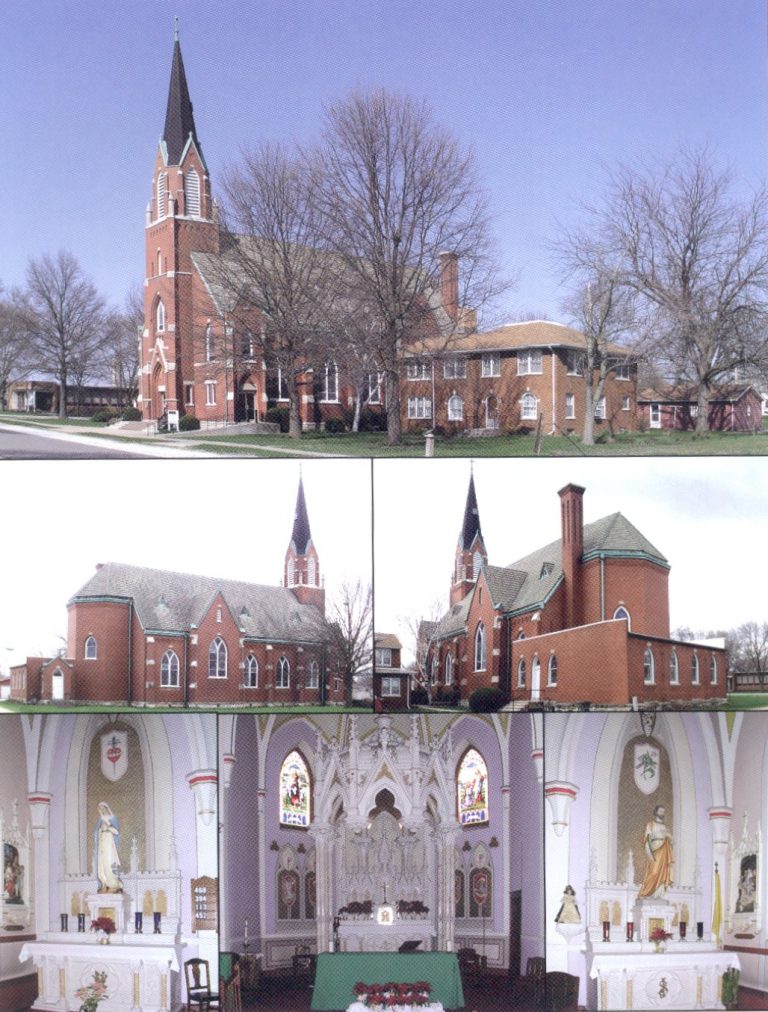
Family & Individual Donations
Welch Family
Cornelius Cunningham
Margaretha Lauff
Mrs. James Lahey
Victor Schiffmacher
Kate Ford
Peter Burke Family
William Graham Family
Wm. Burden Family
Seyller Family
Doty Family
Young Ladies Sodality
Elizabeth Hemlock
Patrick Kelley
Mary Kelley
George Burden & Mary Graham
Mary Murphy & Family
John Murphy
Mrs.Rosanna Murphy & Family
Michael Egan
Thomas Burden & Family
Eleanor Burden
Father Leonard
Father Finn
Malcolm Graham Family
Father Daily
Agnes Daley
John Gaffey
John Mcmanus
John Mcguire
Rev R. Mcguire
Rev. P.J. Weber
Mrs. John Cooney
Sunday school children
St. Anne’s Altar Society
R. Ramsdel
Hanna Ramsdel
John Linder
Anna Welch & Family
Peter Burke & Family
Catherine McCabe
John Connell
Cornelius Cunningham
Thomas Cooney family
Michael Egan
Mr. and Mrs. Molony
Sacred Heart League
Christian and Anna Hutton
Henreken Children
Sigel Family